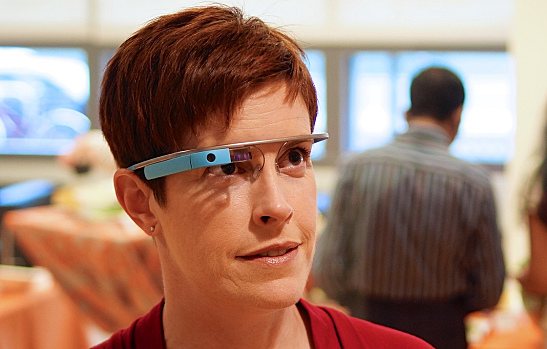With major brands like Apple, Google, Nike, and Samsung heavily investing in wearable tech, it is unquestionable that the style and functionality of the wearable devices of the future will continue to develop rapidly.
When it comes to smart wearable devices, media attention has revolved mostly around Google Glass and smartwatches, especially the Samsung Galaxy Gear watch and the Apple Watch. But as wearable tech develops, consumers may be wondering if this technology can evolve beyond its current position as an intelligent fashion accessory to become an essential part of everyday life. Here’s a look into wearable device concepts currently in development and expected to launch over the next 12 months.
Wearable Augmented Reality
Tech innovators and proponents of wearable devices understand that technology only has a future if it evolves to seamlessly bridge the divide between the physical and virtual worlds.
According to TechRadar, Google Glass developers are working on a sleeker design that does not have the bulky projector seen in the prototype version. Google engineers are faced with the task of allowing users to use information from virtual reality while also remaining aware of their immediate environment. The ultimate intention is to augment the user’s awareness of surroundings while not getting in the way of social interactions. Even though the prototype model has been available in limited quantities since 2013, a general release date for Google Glass is expected in 2015, according to AndroidHeadlines. Samsung Gear Blink and Sony’s SmartEyeglass are two other augmented reality wearable devices anticipated in 2015.
Immersive Experience
Wristify, an MIT-developed, climate-controlling wristband prototype, could make air conditioners obsolete. The device provides natural cooling or warmth by responding to surroundings and communicating with the user, according to Gizmag. Along the same track, California-based Cyrano Sciences is working to develop an electric nose intended to detect dangerous gases in manufacturing industries and mines.
In the future, wearable devices could be replaced by electronic implants to provide a highly immersive digital experience. San Francisco-based NewDealDesign has conceptualized digital implants that monitor health conditions while conducting other programmable functions, like automatically unlocking doors.
Next-Gen Health
Health and fitness wearables have dominated the Consumer Electronics Show in recent years. However, other areas of health are also being touched by the wearable trend. iQ by Intel reports that BABYBE, makers of a portable artificial incubation mattress worn around a baby to help premature infants grow, is bringing haptic information from the mother to the baby in real-time. The use of wearable tech in non-traditional fields such as this is expected to advance over the next year.
The Bionic Man
Future wearable devices could also make wearable bionics a crucial technology for businesses and individuals in data-intensive and manufacturing industries. The ProGlove production tool gives users a new level of business intelligence and control in the field of production management. Similarly, the Open Bionics low-cost robotic hand is intended to replicate a fully-functional human hand and is expected to eventually be available for under $100.
An array of wearable devices are scheduled to be introduced in 2015 from industry leaders and innovators alike. But despite the devices’ increased practicality and svelte designs, unless wearables become more affordable, the technology will likely remain a luxury item for the vast number of tech consumers.
Which of these wearable devices of the future are you most excited about?
Image courtesy of Flickr
[cf]skyword_tracking_tag[/cf]

